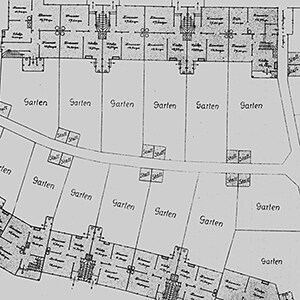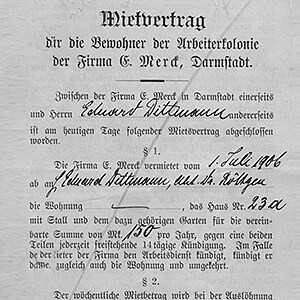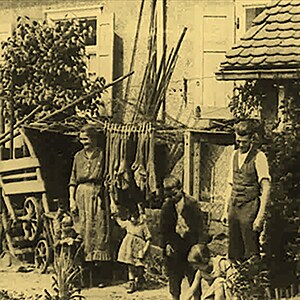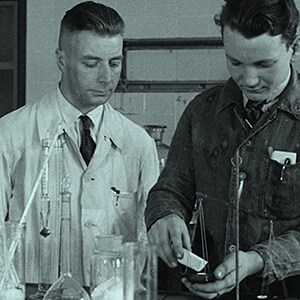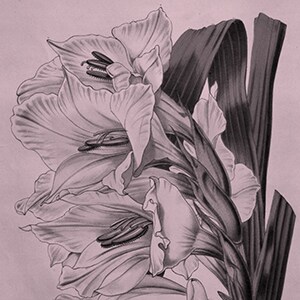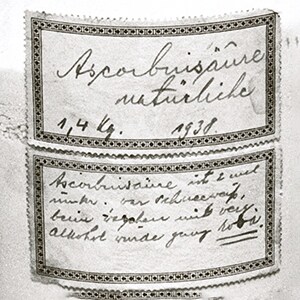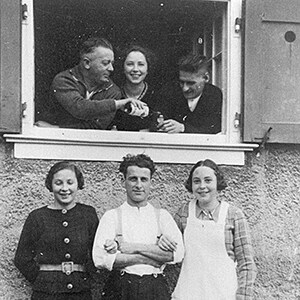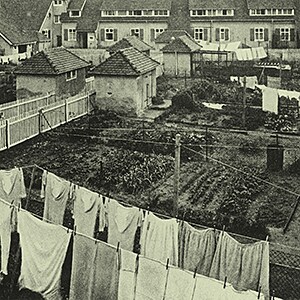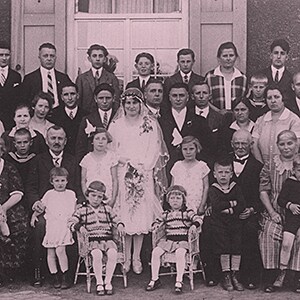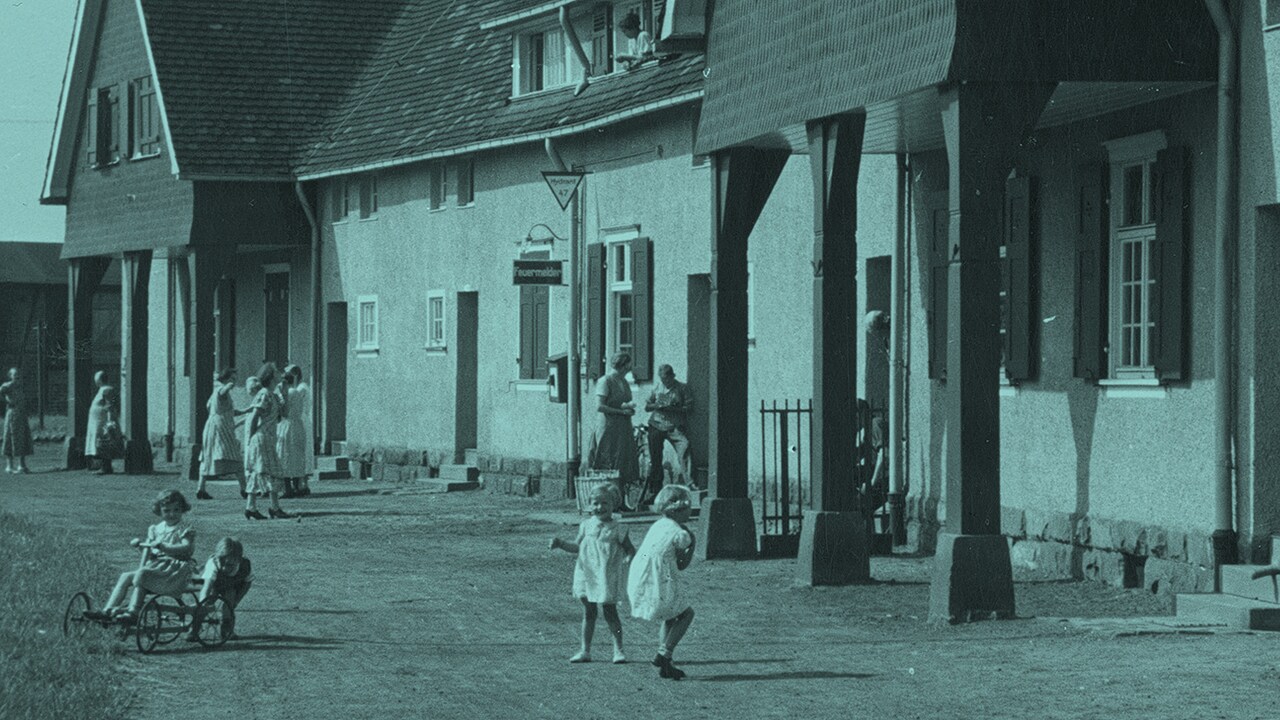
»For us, E.M. stands not only for ›Emanuel Merck‹, but also for ›eternally mine‹.«
The Dittmann siblings, date unknown
»Mine« – For Karl, Eduard, Philipp, and Ludwig, for Marie, Magdalena and Käthe Dittmann, this refers to the factory where their father started working in 1888 and where the siblings live with their parents. The family’s emotional ties to the company are strong. They deeply appreciate the amenities provided by the company and the thoughtfulness shown by the owners’ wives.
The children are heavily influenced by day-to-day life at the factory; it is only natural that they wish to work at the company as well, often joining the company at the age of 14. Eduard is hired as a worker in 1907. Although he would have preferred to pursue an apprenticeship in one of the workshops, there is not enough money for that. Yet he soon becomes a laboratory assistant. Philipp starts in the warehouse, then goes on to prepare extracts and tinctures. Ludwig joins him in 1912 and takes particular pleasure in writing labels. He is filled with pride at the thought of vessels with his handwriting being sent out into the world. Karl starts in the scientific laboratory as a bottle washer. During World War I, he additionally works in production. He is proud of what he does. By the age of 17, he is already performing physically strenuous labor and receives a bread and bacon supplement, a welcome change to potatoes with mustard or beet marmalade, the items usually served in the cafeteria.
In 1918, the brothers are deployed wherever manpower is needed most. Yet Eduard has a new goal: to join the factory fire brigade, which is also responsible for security and medical services. He is able to commence more in-depth vocational training. He particularly enjoys working the night watch, where he can protect the factory and enjoy the firm’s full trust. Following a serious illness, Philipp can no longer perform strenuous labor. However, the company does not give upon the young man and instead entrusts him with a different task, making him a supervisor in the weighing warehouse. In 1922, Ludwig transfers to the shipping department, which presents him with a completely new set of challenges. Yet he is ambitious. He masters stenography and typing, learning his new tasks quickly. His efforts pay off. Conferred a great deal of responsibility, he is put in charge of payroll matters and statistics. Starting in the 1920s, Karl is assigned to a variety of testing laboratories.
The Dittmann parents are proud of their children’s careers. On their 50th work anniversary, the sons receive the Order of Merit of the Federal Republic of Germany. Unfortunately, almost nothing is known about the daughters’ careers. Marriages between sons or daughters of families with an equally long-standing tradition of working at the company are fairly common. In 1953, 31 members of the Dittmann family work at the company, collectively representing 450 years of service with it.
With the company moving out of downtown Darmstadt, it plans to build a »workers’ colony« to address the need for housing. Architect Friedrich Pützer designs a countryside development intended to benefit families with many children. They are allotted fiverooms and a yard, and the rent is affordable. In 1906, the Dittmanns move into the housing development.
Karl Dittmann works in multiple laboratories, is entrusted with work on vitamin D2 and monitors experiments on the manufacture of natural ascorbic acid. All plant life accessible within the region is tested for vitamin C content. Starting in 1935, vast quantities of gladiolus leaves are harvested for extraction!
The loyalty of the Dittmann family to the company can be traced over several generations: »Eternally mine« – this also applies to Karl and Marie’s son, to Eduard and Lina’s daughter, to Magdalena and Jakob’s sons, etc. The whole family gathers for Karl Dittmann’s wedding.

